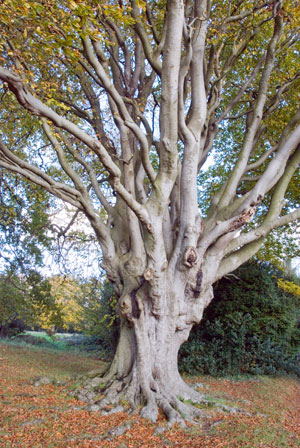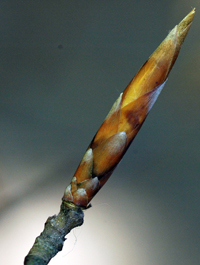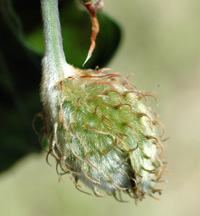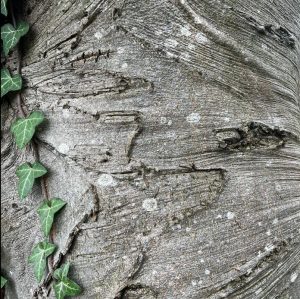Beech

Beech may grow to form beautiful, stately trees (up to 30 or 40M high); the trunk may be massive. In large trees, it is important to regularly check for rot where the crown forks. It is a relatively fast growing species, that is found on well drained soils. Its root system is relatively shallow and the tree is, therefore, susceptible to high winds and the root plate may be exposed. With a relatively shallow root system, drought can also be a problem.
In some parts of the country, beech has been extensively used in hedge laying.
.
Leaf

The leaves are simple. They are longer than they are wide (pointed ovals). They have between 5 and 9 pairs of veins (see image opposite). At the end of each vein, there is a small tooth on the wavy leaf margin. When first formed, there are small hairs on the margin / edge and underside of the leaf. These hairs are lost as the leaf matures.Young leaves may have an almost corrugated or ribbed appearance - see adjacent photo.
The leaves are arranged alternately along the twigs. When the leaves are first formed, they are a light green colour but gradually darken. The leaves form a dense canopy, and other plants struggle to survive underneath this.
Buds, Bark & Stem

Beech has long, pointed buds, set at an angle from the twig / stem. The buds are quite long and big in relation to the stem / twig). They have sometimes been described as copper coloured and cigar shaped. Young twigs can have a slight 'zig-zag' appearance.
The twigs may retain dead leaves throughout winter (which makes beech good for hedging).
Flowers and Fruits

Yellowish-green small flowers which appear as the leaves unfurl from the buds. The fruit that forms from them is ‘beech mast’. This consists of green prickly husks that contain shiny, brown nuts. In a 'good year, the nuts are fat and edible, though they can be somewhat shrunken / triangular in form. As the husk dries, it splits releasing the nuts.
The seeds / nuts constitute what is sometimes termed the mast, and the number produced varies tremendously from year to year. Those years when the production is prolific are termed Mast Years. The woodlands blog has further information on Mast Years. Mast was often used help fatten pigs prior to slaughter, and the practice [pannage] still continues in the New Forest.
Winter Twigs

The leaves wither in the Autumn but may remain on the tree throughout the winter - especially on hedging or younger trees. This retention of the leaves in winter is known as marcescence. See the woodlands blog on this topic.

Beeches have a smooth grey bark; with age the trunk may develop 'ridges' / striations running across.
Beech bark disease can cause mortality and defects in trees. The disease occurs after the bark is invaded by a fungus and a scale insect.
Beneath the soil, beech establishes extensive mycorrhizal relationships.